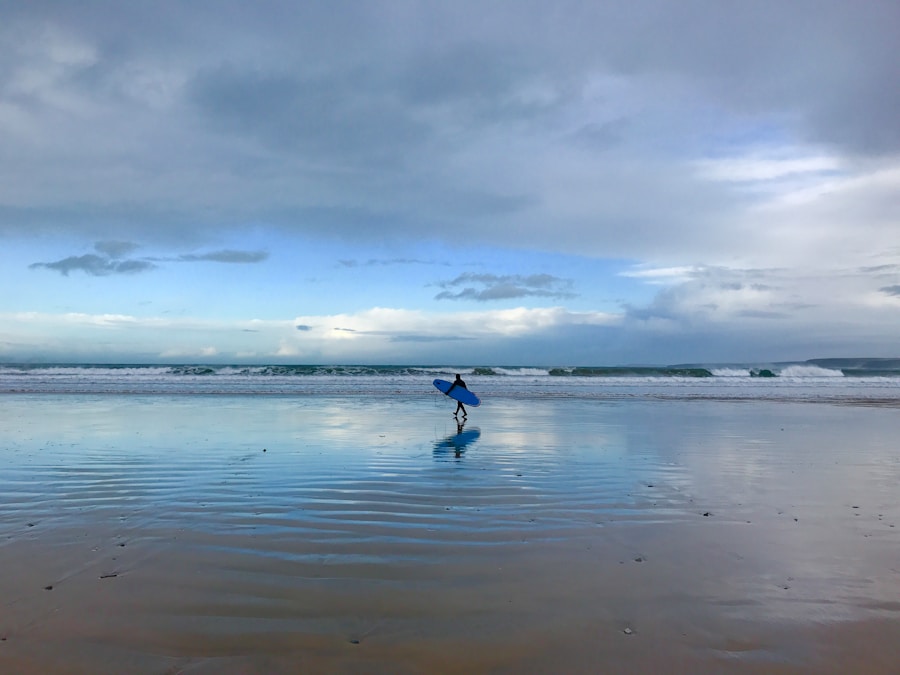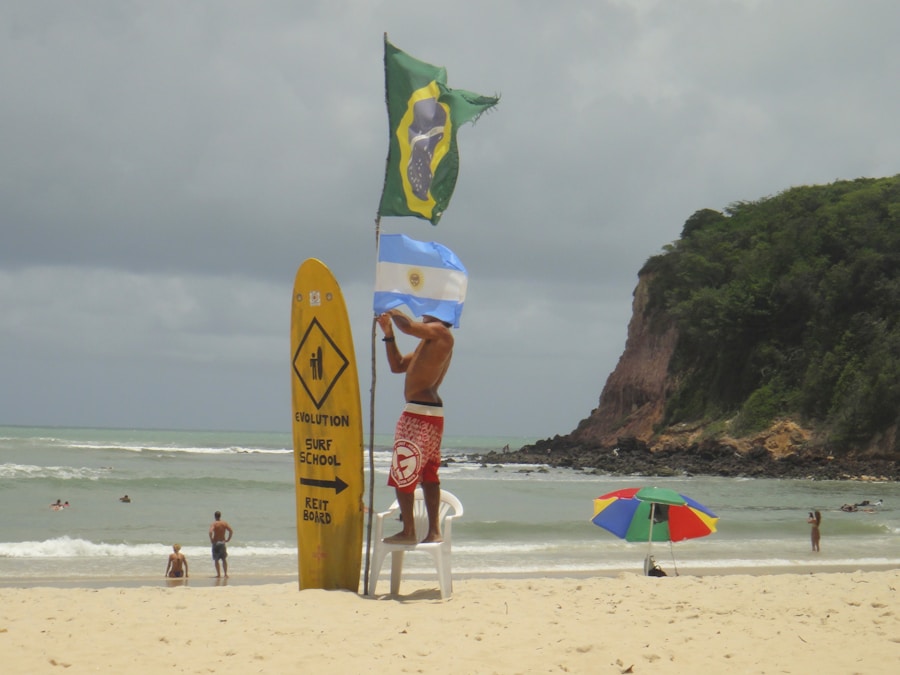Download links
How to install Surfing Makes Historic Debut at Olympics APK?
1. Tap the downloaded Surfing Makes Historic Debut at Olympics APK file.
2. Touch install.
3. Follow the steps on the screen.
Description
The journey of surfing towards Olympic inclusion has been a long and winding road, marked by passionate advocacy, evolving perceptions of the sport, and a growing recognition of its cultural significance. Surfing, with its roots deeply embedded in the coastal cultures of Hawaii and Polynesia, has long been more than just a sport; it is a way of life for many. The push for surfing to be recognized on the global stage began to gain momentum in the late 20th century, as the sport’s popularity surged worldwide.
The International Surfing Association (ISA) played a pivotal role in this journey, tirelessly promoting surfing as a legitimate competitive sport and advocating for its inclusion in the Olympic Games. In 2016, the International Olympic Committee (IOC) officially announced that surfing would make its Olympic debut at the Tokyo 2020 Games, a decision that was met with both excitement and skepticism. The inclusion of surfing was seen as a significant step towards modernizing the Olympics, appealing to younger audiences, and embracing sports that reflect contemporary culture.
Debates surrounding the sport’s competitive nature, the environmental impact of hosting events in natural settings, and the need for standardized judging criteria were all part of the discourse leading up to the Games. Despite these hurdles, the decision to include surfing marked a watershed moment in the sport’s history, symbolizing its evolution from a niche pastime to a globally recognized athletic discipline.
Key Takeaways
- Surfing’s journey to Olympic inclusion has been a long and challenging one, with the sport finally making its debut at the Tokyo 2020 Olympics.
- The surfing competition format at the Olympics will consist of heats, with athletes judged on the quality of their waves and maneuvers.
- Athletes to watch at the Olympics include seasoned pros like Carissa Moore and Gabriel Medina, as well as up-and-coming talents like Caroline Marks and Italo Ferreira.
- Surfing’s Olympic debut is expected to have a significant impact on the sport, potentially increasing its popularity and global reach.
- The history of surfing dates back to ancient Polynesian cultures and has evolved into a global phenomenon with a rich cultural heritage. The future of surfing at the Olympics holds great potential for the sport’s continued growth and development on the world stage.
The Surfing Competition Format
The Heat Structure
The Olympic format consists of a series of heats, where surfers compete head-to-head in designated surf zones. Each heat typically lasts around 20 to 30 minutes, during which athletes aim to catch and ride waves to score points based on their performance.
Judging Criteria
Judging in Olympic surfing is multifaceted, taking into account various criteria such as wave selection, difficulty of maneuvers, speed, power, and flow. Judges award scores on a scale from 0 to 10, with the highest and lowest scores being dropped to mitigate bias.
Emphasizing Creativity and Style
This scoring system emphasizes not only technical proficiency but also creativity and style, allowing surfers to express their individuality while competing. The top surfers from each heat advance to subsequent rounds, culminating in a thrilling final where medals are awarded. This format not only highlights the athleticism required in surfing but also captures the essence of the sport’s connection to nature and the ocean.
The Athletes to Watch

As surfing makes its Olympic debut, several athletes have emerged as frontrunners, each bringing their unique style and background to the competition. One standout is Carissa Moore from Hawaii, a three-time world champion known for her powerful and fluid surfing style. Moore has been a vocal advocate for women’s surfing and has inspired countless young female surfers around the globe.
Her experience in high-pressure situations and her ability to adapt to varying wave conditions make her a formidable competitor in Tokyo. On the men’s side, Gabriel Medina from Brazil is another athlete to keep an eye on.
His ability to perform under pressure and his deep understanding of wave dynamics give him an edge in competition. Additionally, surfers like Italo Ferreira and Kanoa Igarashi are also expected to make waves at the Olympics, each bringing their own flair and competitive edge. Ferreira’s explosive style and Igarashi’s technical precision highlight the diverse talents present in this inaugural Olympic surfing event.
The Impact of Surfing’s Olympic Debut
| Year | Location | Gold Medalist | Silver Medalist | Bronze Medalist |
|---|---|---|---|---|
| 2020 | Tokyo, Japan | Italo Ferreira (BRA) | Kanoa Igarashi (JPN) | Gabriel Medina (BRA) |
The impact of surfing’s inclusion in the Olympics extends far beyond the competition itself; it represents a cultural shift that acknowledges the sport’s global reach and significance. For many surfers, being part of the Olympics is not just about winning medals; it is about elevating the sport’s profile and inspiring future generations. The visibility that comes with Olympic participation can lead to increased sponsorship opportunities, greater media coverage, and enhanced support for grassroots programs aimed at nurturing young talent.
Moreover, surfing’s Olympic debut has implications for environmental awareness and sustainability. As surfers are often at the forefront of ocean conservation efforts, their presence on such a prestigious platform can amplify messages about protecting marine ecosystems and addressing climate change. The IOC’s commitment to sustainability in hosting events aligns with the values held by many in the surfing community, creating an opportunity for collaboration between athletes and environmental organizations.
This synergy could foster a greater understanding of how sports can contribute positively to global challenges.
The History of Surfing
Surfing’s history is rich and complex, tracing back over a thousand years to ancient Polynesian cultures where it was not only a recreational activity but also a significant aspect of social and spiritual life. The earliest records of surfing come from Hawaii, where it was known as “he’e nalu,” meaning “to slide on water.” Hawaiian royalty often engaged in surfing as a display of skill and status, with different boards crafted from various types of wood depending on the surfer’s size and skill level. The modern era of surfing began in the early 20th century when it was popularized by figures such as Duke Kahanamoku, an Olympic swimmer who introduced surfing to mainland America and beyond.
The post-World War II era saw a surge in interest in surfing culture, particularly in California, where it became synonymous with youth rebellion and counterculture movements. The invention of foam boards and advancements in surfboard design further propelled the sport into mainstream consciousness during the 1960s and 1970s. This period also saw the emergence of professional competitions and surf brands that would shape the industry for decades to come.
The Future of Surfing at the Olympics

Pushing Boundaries and Innovation
The potential for new events or formats could emerge as athletes push boundaries and explore innovative techniques that redefine what is possible on a surfboard.
Sustainability and Environmental Concerns
As environmental concerns become increasingly pressing, there will be a need for sustainable practices within Olympic surfing events. This includes considerations around wave pool technology versus natural surf breaks, as well as initiatives aimed at minimizing ecological footprints during competitions.
A United Global Community
As surfing cements its place within the Olympic framework, it will undoubtedly continue to inspire new generations of athletes while fostering a deeper appreciation for ocean conservation and cultural heritage. The journey from local beaches to the global stage reflects not only the evolution of a sport but also its capacity to unite people across diverse backgrounds through shared passion and respect for nature.
Surfing enthusiasts around the world are eagerly anticipating the sport’s debut at the Olympics. The inclusion of surfing in the prestigious event has been met with excitement and anticipation. For those looking to get more involved in the sport, there are various resources available online. One such resource is the Taya365 website, which offers modified apps for surfing enthusiasts. These apps can help surfers improve their skills and enhance their overall experience in the water. For more information on how to enhance your surfing experience, check out

Facebook comments